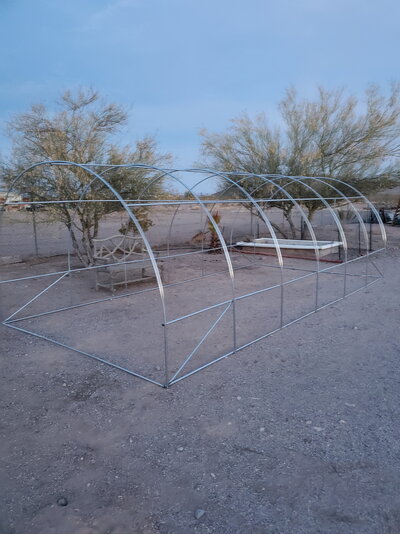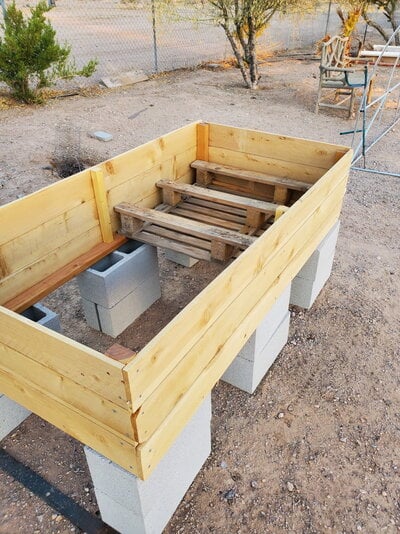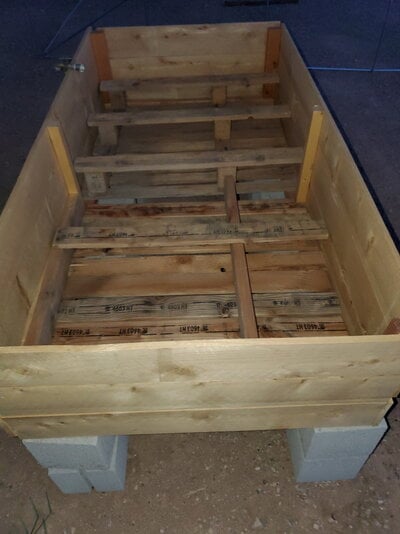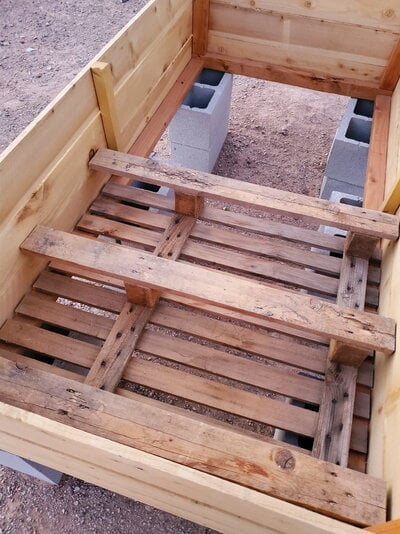Finally taking the leap and building a chicken run/coop along with some raised garden beds.
Thought I'd share the journey and hope to get suggestions, cautions, etc. along the way.
We are near Phoenix, AZ... so it does get very HOT here! The plan is to get 2 or 3 Buff Orpington hens!
Here's the 10' x 20' frame I just put up for the chicken run. My plan is to have an open-ish coop inside. We have to frame in one end of the run. The other end will frame with a screen door.
Plan to have hardware mesh around bottom portion graduating up to chicken wire on the roof.
I also am in the process of building 3 elevated and raised garden beds. I've completed the sides and frames.
Almost done with the "floors" -- using old pallets for that.
It's been so hot out that I've only been working on them after the sun goes down. We'll have to plumb a water line out to both the chicken run and the gardens. We have to pull from the far side of our arsenic filter since our well water is high in arsenic. Figured we don't want to water our edible veggies or eggs with bad water. Once we've got water there, then I'll also be able to setup a mister for the chickens.
Thought I'd share the journey and hope to get suggestions, cautions, etc. along the way.
We are near Phoenix, AZ... so it does get very HOT here! The plan is to get 2 or 3 Buff Orpington hens!
Here's the 10' x 20' frame I just put up for the chicken run. My plan is to have an open-ish coop inside. We have to frame in one end of the run. The other end will frame with a screen door.
Plan to have hardware mesh around bottom portion graduating up to chicken wire on the roof.
I also am in the process of building 3 elevated and raised garden beds. I've completed the sides and frames.
Almost done with the "floors" -- using old pallets for that.
It's been so hot out that I've only been working on them after the sun goes down. We'll have to plumb a water line out to both the chicken run and the gardens. We have to pull from the far side of our arsenic filter since our well water is high in arsenic. Figured we don't want to water our edible veggies or eggs with bad water. Once we've got water there, then I'll also be able to setup a mister for the chickens.







 I may revisit the idea in the future but for now I'm not keen on the expense or extra prep. I appreciate you sharing the idea though. I had not heard of that concept before. Instead I'll have the beds on a timed drip system similar to what I do for all of my potted flowering plants. I think I'd need to feel a lot more ambitious to tackle a SIP system.
I may revisit the idea in the future but for now I'm not keen on the expense or extra prep. I appreciate you sharing the idea though. I had not heard of that concept before. Instead I'll have the beds on a timed drip system similar to what I do for all of my potted flowering plants. I think I'd need to feel a lot more ambitious to tackle a SIP system.